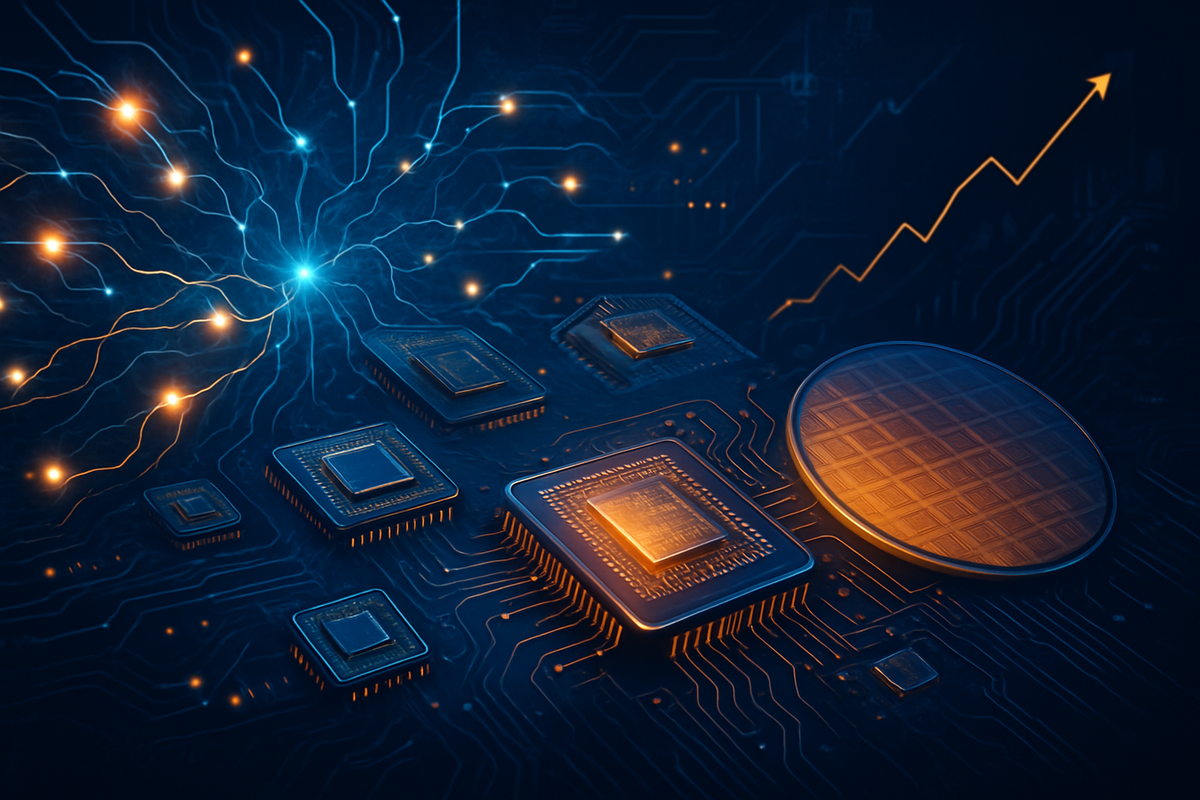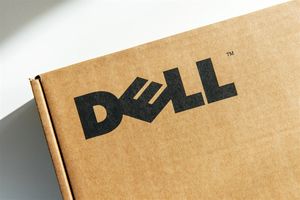
The relentless ascent of artificial intelligence (AI) is sending powerful ripple effects throughout the global technology sector, creating unprecedented demand for specialized hardware and, surprisingly, revitalizing the market for commodity chips. This surging demand, particularly for High-Bandwidth Memory (HBM) and conventional DRAM, is now poised to deliver a significant windfall to industry giants like Samsung Electronics (KRX:005930), which is expected to report its best quarterly operating profit since 2022. This turnaround signifies a critical juncture for the semiconductor industry, highlighting the profound and multifaceted influence of AI on supply chains, pricing, and corporate fortunes.
The immediate implications are clear: a robust rebound for Samsung's semiconductor division, largely fueled by the indirect effects of the AI boom on the commodity memory market. The burgeoning need for AI servers is driving up the prices and shipments of conventional DRAM and NAND, contributing significantly to Samsung's impressive financial resurgence. This trend of tight supply and rising prices for commodity memory is not a fleeting phenomenon; analysts project it to persist well into 2026, setting the stage for a prolonged period of high demand and potentially elevated profitability for key memory manufacturers.
The AI Tsunami: A Deep Dive into Chip Market Dynamics
The current semiconductor landscape is being dramatically reshaped by the artificial intelligence revolution. At its core, the explosion in AI development, particularly for generative AI and large language models, has ignited an immense demand for specialized AI accelerators, primarily high-end Graphics Processing Units (GPUs) and their accompanying High-Bandwidth Memory (HBM) chips. While the direct spotlight often falls on these cutting-edge components, a significant "pull-through" effect is being observed on more conventional, or "commodity," memory chips such as DRAM and NAND flash, which are essential for the vast server infrastructure supporting AI.
This dynamic has been building over the past year, with a noticeable acceleration in 2024 and continuing into 2025. Memory chip manufacturers, including Samsung, have strategically reallocated some of their existing DRAM production lines to focus on the more complex and profitable HBM. This necessary shift, while lucrative for advanced memory, has inherently reduced the overall manufacturing capacity available for conventional DRAM, exacerbating supply constraints. Concurrently, the sheer computational demands of AI necessitate a massive expansion of data centers, all of which rely heavily on conventional DRAM and NAND products for their operational backbone. The convergence of reduced commodity production capacity and robust demand from AI-related servers has led to a tightening of supplies and substantial price increases for these essential chips, with average DRAM prices reportedly jumping approximately 172% year-over-year in the third quarter of 2025.
Samsung, as the world's largest memory chipmaker, finds itself at the epicenter of this transformation. As of 10/14/2025, despite facing some initial challenges in fully capitalizing on the most advanced HBM segment, where it has lagged rivals like SK Hynix (KRX:000660), Samsung has emerged as a significant beneficiary of the surging demand and prices for conventional DRAM and NAND. The strong performance of these commodity memory products has largely offset slower progress in advanced HBM sales to major clients such as Nvidia (NASDAQ: NVDA). Furthermore, Samsung's foundry unit, responsible for manufacturing logic chips, has also shown signs of recovery, with narrower losses attributed to increased utilization rates. The market has reacted positively to this outlook, with Samsung's shares surging by approximately 75% this year and over 60% since June.
Shifting Fortunes: Winners and Losers in the AI Chip Rush
The AI-driven chip squeeze is creating a clear delineation of winners and losers within the tech industry, fundamentally altering the competitive landscape and strategic priorities of major players. At the forefront of the beneficiaries are the memory chip manufacturers, particularly those with robust capabilities in both conventional and advanced memory. Samsung (KRX:005930), despite some HBM hurdles, is a prime example, leveraging its vast production scale for DRAM and NAND to capitalize on soaring prices and demand. Its projected 32% year-over-year rise in third-quarter 2025 operating profit, reaching an estimated 12.1 trillion won (approximately US$8.5 billion), is a testament to this, marking its highest quarterly profit in over three years. SK Hynix (KRX:000660) is another significant winner, having established an early lead in the HBM market, particularly with its strong relationship with Nvidia. Micron Technology (NASDAQ: MU), also a major memory player, is similarly positioned to benefit from the upward price trajectory and demand for memory products.
Beyond memory, companies specializing in AI accelerators and high-performance computing are also clear winners. Nvidia (NASDAQ: NVDA) continues to dominate the AI chip market with its powerful GPUs, and the demand for its products directly fuels the need for HBM and, by extension, conventional memory for the servers housing these GPUs. Advanced Micro Devices (NASDAQ: AMD), while a smaller player in AI GPUs, is also gaining traction, and its collaborations with memory manufacturers like Samsung for HBM supply underscore its growing importance. Conversely, companies heavily reliant on consumer electronics markets, such as smartphones and PCs, which experienced weaker demand for conventional chips in late 2024, might face continued pressure if the strategic shift towards AI memory persists. However, even these segments will eventually benefit from the overall technological advancement and integration of AI features.
The broader impact extends to the entire technology supply chain. Companies involved in advanced packaging, critical for integrating HBM with AI accelerators, are seeing increased business. Equipment manufacturers supplying tools for memory fabrication are also experiencing heightened demand. However, smaller players or those with less diversified product portfolios might struggle to secure adequate chip supply or compete with the purchasing power of larger tech giants. The dynamic also pushes companies to invest more heavily in R&D for next-generation memory and packaging technologies, creating a virtuous cycle of innovation but also demanding significant capital expenditure.
Broader Significance: Reshaping the Tech Ecosystem
The AI boom's impact on commodity chip supply and Samsung's resurgence is not an isolated event but a critical indicator of broader, systemic shifts within the global technology ecosystem. This phenomenon underscores the profound and accelerating digitalization across all industries, where AI is no longer a niche technology but a foundational element driving infrastructure investment. The shift of manufacturing capacity towards HBM and the subsequent tightening of conventional DRAM supply highlight a strategic reorientation of the semiconductor industry, prioritizing the high-growth, high-margin AI segment. This trend is likely to accelerate, pushing memory manufacturers to innovate rapidly in advanced packaging and memory architectures to meet the insatiable demands of AI.
The ripple effects extend across the entire tech value chain. Cloud service providers like Amazon (NASDAQ: AMZN) Web Services, Microsoft (NASDAQ: MSFT) Azure, and Google (NASDAQ: GOOGL) Cloud are experiencing unprecedented demand for AI infrastructure, driving their need for both advanced AI chips and the underlying commodity memory. This, in turn, fuels further investment in data centers and specialized hardware. For hardware manufacturers, the challenge lies in balancing the supply of components for traditional consumer electronics with the surging requirements of AI servers. Regulatory bodies are also taking note; the increasing concentration of advanced chip manufacturing and design capabilities, coupled with geopolitical tensions (such as China's export controls on rare-earth minerals), raises concerns about supply chain resilience and national security, potentially leading to increased scrutiny and calls for domestic production incentives.
Historically, the semiconductor industry has been cyclical, characterized by boom-and-bust periods. However, the current AI-driven surge appears to be more structural, fueled by a fundamental technological paradigm shift rather than just typical market fluctuations. While past cycles were often driven by PC or smartphone demand, AI's pervasive application across diverse sectors—from autonomous vehicles to healthcare and finance—suggests a more sustained demand trajectory. This situation bears some resemblance to the dot-com boom of the late 1990s in terms of rapid technological adoption and investment, but with a more tangible and immediate impact on enterprise infrastructure and national competitiveness. The persistent tightness in commodity memory supply, projected into 2026, further emphasizes the long-term nature of this AI-driven transformation.
What Comes Next: Navigating the AI-Driven Future
The immediate future will see continued intense competition and strategic maneuvers within the semiconductor industry. In the short term, memory prices, particularly for DRAM and NAND, are expected to remain elevated, sustaining the profitability of key players like Samsung (KRX:005930) and SK Hynix (KRX:000660). Manufacturers will likely accelerate their investments in HBM production capacity, aiming to catch up with demand and secure lucrative contracts with leading AI chip developers like Nvidia (NASDAQ: NVDA) and AMD (NASDAQ: AMD). Samsung's recent certification from Nvidia for its 12-layer HBM3E chips and an order from AMD signify its aggressive push to overcome past HBM challenges. The focus will also be on optimizing advanced packaging technologies, which are crucial for integrating HBM with AI accelerators efficiently.
Looking further ahead, the long-term possibilities point towards a continuous evolution of memory architectures tailored specifically for AI workloads. Innovations in next-generation HBM, such as higher bandwidth and lower power consumption, will be paramount. We might also see the emergence of entirely new memory technologies designed to bridge the gap between processing and storage, further enhancing AI performance. Strategic pivots will be necessary for companies across the tech spectrum; hardware manufacturers will need to prioritize AI-centric product development, while software companies will increasingly optimize their solutions for the latest hardware advancements. Collaboration between chip designers, memory manufacturers, and cloud providers will become even more critical to create integrated, high-performance AI ecosystems.
Market opportunities will abound for companies that can innovate in AI hardware, software, and services. This includes not only chipmakers but also specialized cooling solutions providers, power management companies, and firms offering AI infrastructure management. However, significant challenges will also emerge, including the escalating costs of R&D and manufacturing for advanced chips, the constant pressure to secure critical raw materials (exacerbated by geopolitical factors), and the ongoing talent war for skilled engineers. Potential scenarios range from a sustained, robust growth phase for the semiconductor industry, driven by AI, to periods of oversupply if capacity expansion outpaces demand too quickly, though the current outlook suggests demand will remain strong. The "Stargate" project by OpenAI, reportedly requiring more than double the world's current HBM capacity, underscores the immense scale of future AI infrastructure needs.
A New Era for Semiconductors: Wrapping Up the AI Boom's Impact
The AI boom's squeeze on commodity chip supply, culminating in Samsung's (KRX:005930) expected best profit since 2022, marks a definitive turning point for the semiconductor industry and the broader tech landscape. The key takeaway is the profound and multifaceted influence of artificial intelligence, which not only fuels direct demand for cutting-edge AI accelerators but also creates a powerful ripple effect, driving up prices and demand for conventional memory chips. This dual dynamic has fundamentally reshaped market expectations and corporate strategies, ushering in an era where memory is not merely a component but a strategic asset in the global race for AI dominance.
Moving forward, the market will remain characterized by high demand for memory products, particularly HBM, and sustained investment in AI infrastructure. While Samsung has demonstrated a strong rebound driven by commodity memory, its continued success will hinge on its ability to fully capture market share in the advanced HBM segment, as evidenced by past challenges. Investors should watch closely for further developments in HBM technology, strategic partnerships between chipmakers and AI developers, and any shifts in global supply chain dynamics, especially concerning raw material export controls. The financial performance of memory leaders like Samsung, SK Hynix (KRX:000660), and Micron Technology (NASDAQ: MU) will serve as key indicators of the market's health.
Ultimately, the AI boom is not just a temporary surge; it represents a structural transformation of the tech industry. Companies that can adapt quickly, innovate relentlessly, and secure their supply chains will be best positioned to thrive in this new, AI-centric world. The current environment is a testament to the immense power of technological innovation to redefine markets and create new avenues for growth, making the semiconductor sector one of the most exciting and critical areas to observe in the coming months and years.
This content is intended for informational purposes only and is not financial advice





